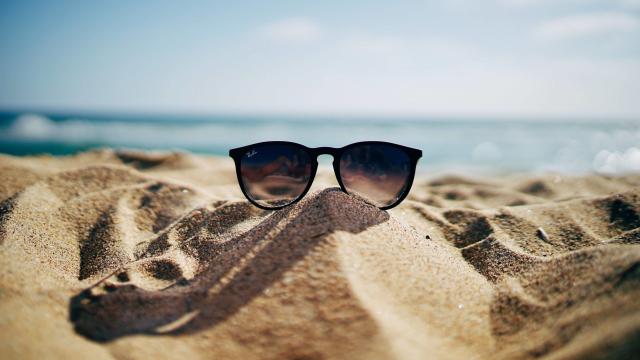Now that we’re heading towards the hottest part of year, it’s time to talk about heatwaves — specifically, how to stay healthy during them. Rather than just trying to tough it out, it’s best to take a few precautions. This is especially true if you or someone you’re taking care of is in a high-risk group, like people 65 and over, children two and below, pregnant individuals or people with chronic illnesses.
Stay hydrated
This one is obvious, but it’s also really important. You should always be drinking plenty of fluids (ideally water) but this is crucial during a heatwave. It’s not enough to only drink when you’re feeling thirsty, because as the Mayo Clinic points out, when you’re thirsty, you could already be dehydrated.
The key is making it as easy as possible to keep drinking. This means carrying around a water bottle, maybe setting a timer or using an app to remind you to drink, ordering water at bars and restaurants (in addition to whatever else you’re drinking), eating hydrating foods (like fruits and some vegetables) and jazzing up your water with fruit infusions so it tastes better.
Replace salts and minerals
When you sweat heavily, your body is getting rid of some of the salts and minerals it needs to function. Sports drinks might help with this, but there are other ways to replenish, like getting the salts and minerals through your diet. Also, if you are on a low-salt diet, have diabetes, high blood pressure or other chronic conditions, make sure to talk with your doctor before drinking a sports beverage to make sure it doesn’t do more harm than good.
Spend as much time indoors as possible, ideally in the AC
Given how hot it is outside, your best bet is to stay inside in air-conditioned buildings. Air conditioning is the number-one protective factor against heat-related illness and death. If you don’t have air conditioning at home, try to spend time in public facilities with AC, like libraries or designated cooling centres.
And don’t just rely on a fan to keep you cool if the temperature is more than 40 degrees Celsius — you’ll need something that actually cools the air down, rather than moving it around. This can give your body a false sense of comfort and cause you to miss the signs of heat-related illness.
Dress appropriately
If you have to be outside for any reason, try to wear loose, lightweight, light-coloured clothing. And of course, don’t forget your sunscreen and a wide-brimmed hat.
Plan your day accordingly
If you absolutely must do something outside, try and do it as early or late in the day as possible, to avoid the afternoon’s peak heat. If you do find yourself outside during the day, take as many breaks as possible. This also means pacing yourself and resting as soon as you start feeling dizzy, confused or weak.
Know the signs of heat-related illnesses
When the temp goes up, so does your chance of coming down with a heat-related illness, like heat stroke or heat exhaustion. The symptoms of heat exhaustion include dizziness, nausea and vomiting, headache, fatigue or weakness, heavy sweating, clammy skin and/or a fast, weak pulse.
Heat stroke can include some of the same symptoms — like headache, dizziness and nausea — as well as confusion, irritability, hallucination, passing out or collapsing, having trouble walking, seizures and/or reddened skin, with or without sweating.
Check your medications
If you have a chronic illness and are on a regular medication, become familiar with its side effects. In some cases, certain medications can make the effect of extreme heat even worse. If that’s the case, do all of the above and be extra cautious when going outside.
Check on others who may be at risk
Even if you’re handling the heat, it doesn’t mean that everyone else is. You might want to check in on people you know who fall into the high-risk groups mentioned above — especially the elderly.
This article was originally published in November 2019.

Leave a Reply
You must be logged in to post a comment.